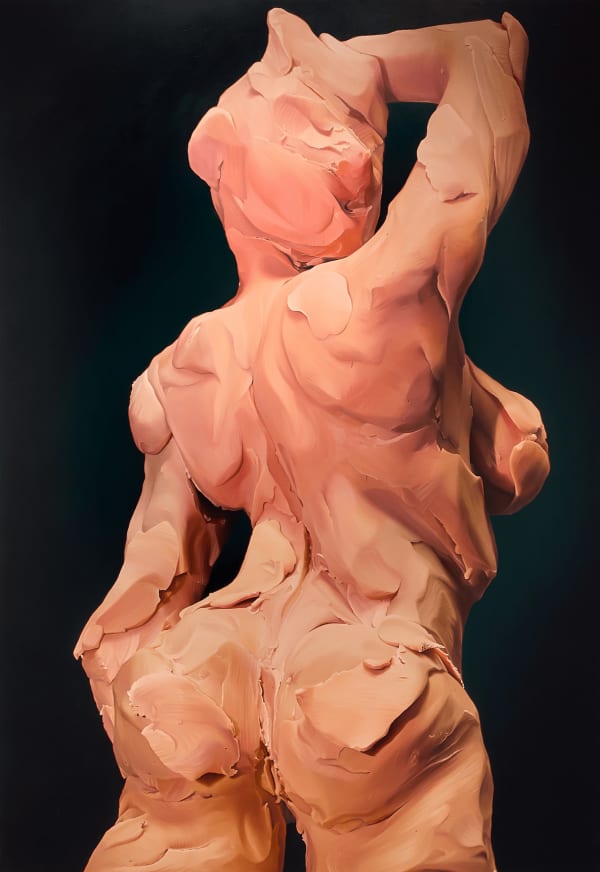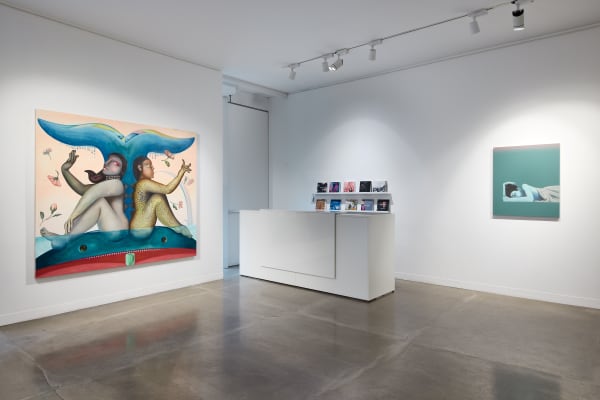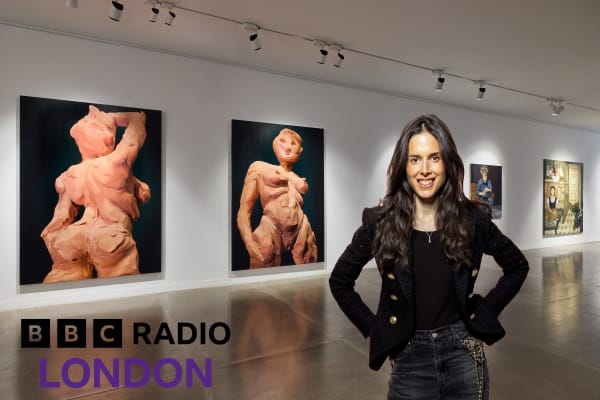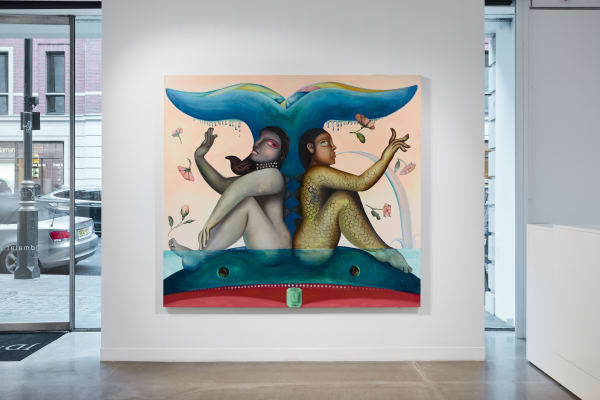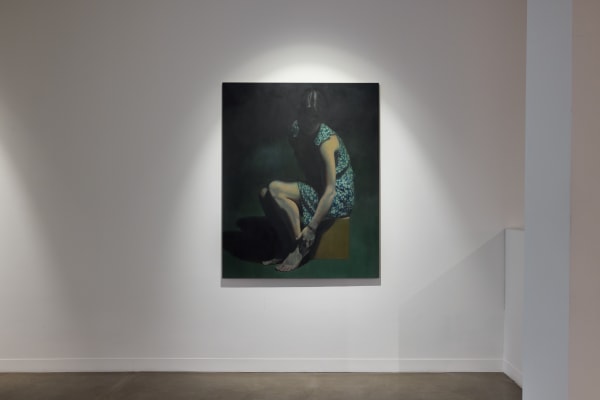Natalia Ocerin
Biography
Natalia Ocerin (b. 1989) is a Spanish artist based in London, renowned for her hyperreal oil paintings of faux-naïf plasticine sculptures to present a poignant commentary on our constructed realities.
Returning to the supposedly primal mode of visual expression, Ocerin begins her work by sculpting simplified plasticine figures and objects, carefully arranging them into scenes ranging from hedonistic parties and home life to titanic female nudes and apocalyptic worlds. Ocerin then takes to her brush to produce hyperreal oil paintings of her mise-en-scènes, expertly emulating the textures and depth of colour of plasticine through her trompe-l'oeil technique. For Ocerin, this conviviality of sculpture and painting is integral to the educational narratives at the heart of her artistic endeavours, bringing to light important social and political issues of our contemporary environment.
Whilst her characters reside in decadent environments of a Rococo-esque frivolity, at the heart of Ocerin's sculpted and painted scenes lies a dark and humorous socio-political commentary, emphasising key issues pertaining to society and the 'self' such as mental health and the body. By employing plasticine as a core medium in her work, Ocerin utilizes the 'easy-to-use' and childlike nature of the medium to coalesce the imaginary and the real, presenting complex narratives and political themes on a relatable and educational level.
The earlier stages of Ocerin's career saw an emphasis on mental health and the body, a daring and unsettling subject matter spurred on by Ocerin's interest in the work of Michel Foucault, Sigmund Freud, Jenny Saville, Edward Hopper, and Neo Rauch. Among the varied inspirations of her work are photographic mediums, as well as artists who had a flare for colourful compositions such as David Hockney. Amassing personal narratives, lived experiences and art historical references, Ocerin's work highlights the need for the return to the elementary and fundamentals in a contemporary age where the dark and macabre has become increasingly present.
Works
Exhibitions
Press
-

Contemporary Figuration: Between body & Metaphor
Meer, January 16, 2024 -

BBC RADIO LONDON: Gallery director discusses 'Contemporary Figuration: Between Body & Metaphor'
Jumoké Fashola, BBC Radio London, January 7, 2024 -

A Refreshing Take on Figurative Painting at JD Malat Gallery
Lee Sharrock, CULTURALEE, December 18, 2023 -

ART PLUGGED: Contemporary Figuration: Between Body & Metaphor
Art Plugged, December 15, 2023


